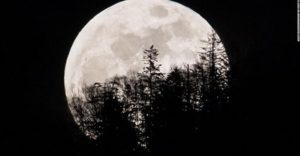
“My Battery is Low and It’s Getting Dark’: Mars Rover Opportunity’s Last Message to Scientists
NASA’s Opportunity Mars rover was built to operate for just 90 days, but kept going for 15 years. NASA officially declared it dead on Wednesday, and its last message to scientists before it went dark eight months ago is getting a lot of attention.
The rover spent a decade and a half sending data bursts, not words, but according to science reporter Jacob Margolis, scientists at NASA said the last message they received from Opportunity effectively translated to, “My battery is low and it’s getting dark.”
The solar-powered rover was, in the end, doomed by a ferocious dust storm.
Flight controllers tried numerous times to make contact, and sent one final series of recovery commands Tuesday night along with one last wake-up song, Billie Holiday’s “I’ll Be Seeing You,” in a somber exercise that brought tears to team members’ eyes. There was no response from space, only silence.
Thomas Zurbuchen, head of NASA’s science missions, broke the news at what amounted to a funeral at the space agency’s Jet Propulsion Laboratory in Pasadena, California, announcing the demise of “our beloved Opportunity.”
“This is a hard day,” project manager John Callas said in an auditorium packed with hundreds of current and former members of the team that oversaw Opportunity and its long-deceased identical twin, Spirit. “Even though it’s a machine and we’re saying goodbye, it’s still very hard and very poignant, but we had to do that. We came to that point.”
NASA tried to wake up Opportunity daily with different songs, and it wasn’t just Billie Holiday they thought might bring it out of sleep.
NASA published their “Opportunity, Wake Up!” playlist on Spotify. It contained hits like “Wake Me Up Before You Go-Go” by Wham!, “Here Comes the Sun” by The Beatles, “Life On Mars?” by David Bowie, “Telephone Line” by Electric Light Orchestra, “I Will Survive” by Gloria Gaynor, and “I Won’t Back Down” by Tom Petty.
Click here to view the full “Opportunity, Wake Up!” playlist
Opportunity was exploring Mars’ Perseverance Valley, fittingly, when the fiercest dust storm in decades hit and contact was lost. The storm was so intense that it darkened the sky for months, preventing sunlight from reaching the rover’s solar panels.
When the sky finally cleared, Opportunity remained silent, its internal clock possibly so scrambled that it no longer knew when to sleep or wake up to receive commands. Flight controllers sent more than 1,000 recovery commands, all in vain.

